Every week we get Down & Dirty, in which Nozlee Samadzadeh breaks down our favorite seasonal fruits, vegetables, and more by the numbers.
With tan, green, and yellow skin that yields to bright orange insides, winter squash provide a cold-weather splash of color at farmers' market. Though they're closely related to melons and (of course) summer squash, winter squash have unique characteristics -- their tough skin, delicious seeds, and sweet flesh make them kitchen staples from the beginning of autumn until spring.
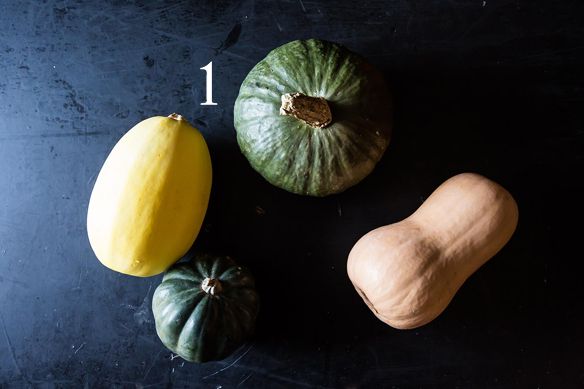
1. Squash in General: Unlike summer squash, which reach baseball bat-like proportions when grown too long, winter squash are left to fully mature before being picked. Like potatoes, they must undergo a curing process if they're to be stored in the long term -- basically, the squashes are allowed to dry out a bit in a cool, dark environment. (This is why it can be so tough to peel them!)
As you can see, there is a wide array of squash types -- although hilariously, we forgot to include the prototypical orange pumpkin, which is also a winter squash! The winter squash genus contains over a dozen species of squash, that each in turn has multiple cultivars. The three species that yield most edible squash (as opposed to inedible gourds) are Cucurbita maxima, moschata, and pepo. Let's take a closer look at some of the most popular cultivars:

2. Butternut: If it weren't so perfect -- it's by far Melissa Clark's favorite squash to cook with -- it would be easy to get bored with butternut squash. Thin-skinned with dense orange flesh that's flavorful without being cloying, butternut is by far the best all-purpose squash for everything from roasts to pumpkin pie. Butternut squash is a member of the Cucurbita moschata species, known for their tan skin, oblong, bulbous shape, and sweet flesh. Fun fact: almost all canned pumpkin is made from C. moschata cultivars!

3. Acorn: This squash falls in the C. pepo species along with traditional orange pumpkins, spaghetti squash, delicata, and -- confusingly! -- all summer squash varieties. Acorns are named for their shape, of course, and have a signature orange blush on their green skins. Their ridges make them almost impossible to peel, but no matter: they quickly break down into wedges that are perfect for roasting. Smaller acorns are just the right size for halving and stuffing -- a wonderful vegetarian-friendly entree.
4. Seedy Characters: The peeled, roasted seeds of any winter squash are called pepitas. The seeds are just as good unpeeled -- just clean them off, toss them with salt and olive oil, and roast them. Although all squash seeds are technically edible, once the seeds get larger than your thumbnail they're likely to be too tough to be pleasant. (As a rule of thumb, thinner-skinned squashes produce better seeds for snacking.) Squash seeds are also used to make a flavorful oil perfect for salads and garnishes.
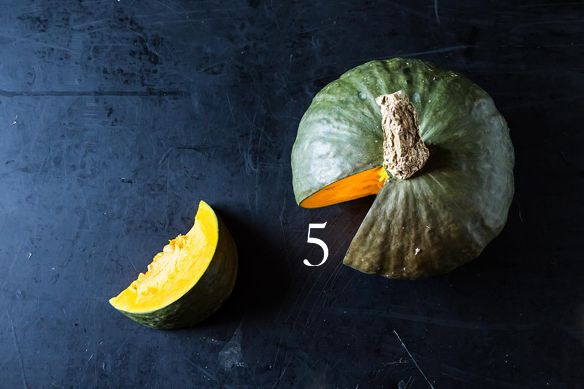
5. Kabocha: Although all squashes -- summer and winter -- originated in South America before spreading around the world, kabocha is a specifically Japanese variety. Squat, wide, and round, with a green exterior and dense, moist, fluffy flesh, kabocha will hold its shape when simmered where other squash would start to fall apart, making it perfect for soups and traditional Japanese tempura. Other cultivars in the same species as kabocha, C. maxima, include Kuri, Hubbard, and Buttercup squash.
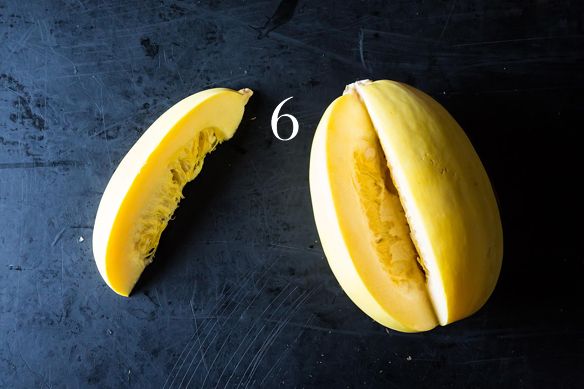
6. Spaghetti: At first glance, the name is confusing. The squash looks kind of like a colorless watermelon, after all. But when cooked, the flesh of the squash falls apart into strands that look just like spaghetti -- they're tender and sweet and not al dente at all, but the name has stuck.

7. Delicata -- and more: Long and thin-skinned, delicatas are one of the most fragile winter squashes. Its sweet, nutty flesh is almost dessert-like -- try swapping it in for the sweet potatoes in your next Thanksgiving casserole.
And there are many, many winter squashes you'll find at winter farmers' markets that we couldn't cover today -- the powder-blue Fairytale squash, the aptly named Banana squash, the enormous South American Calabaza, and more. Fortunately, they all cook up (and break down) the same way: try mixing and matching next time you make your favorite winter squash recipe!
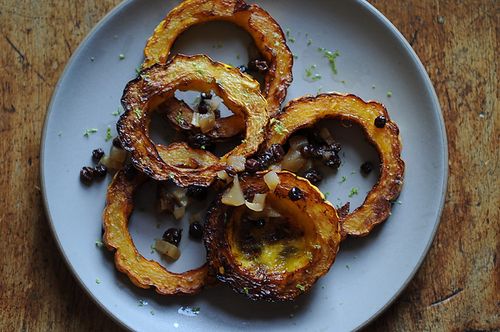
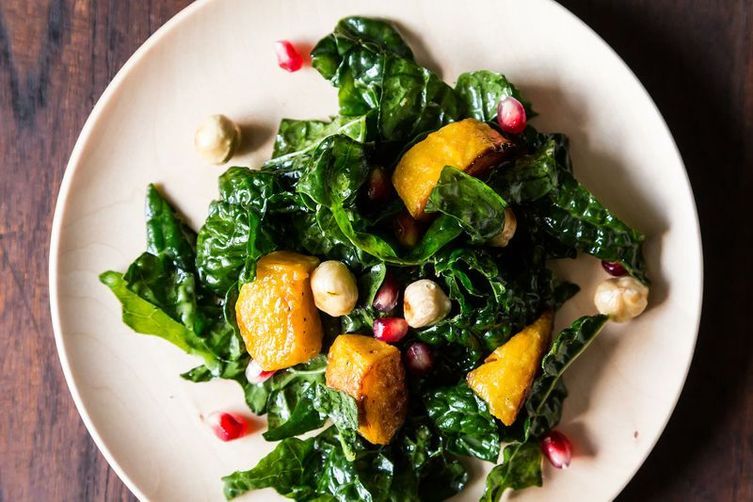
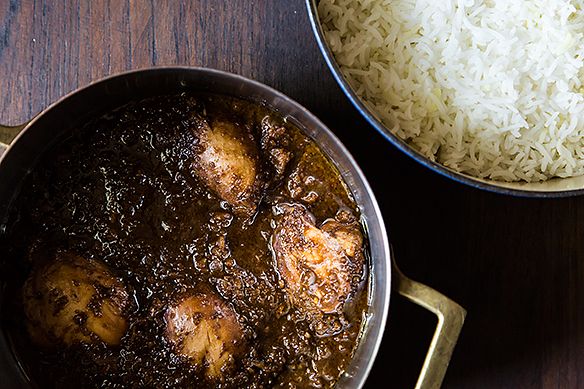
Photos by James Ransom











See what other Food52 readers are saying.